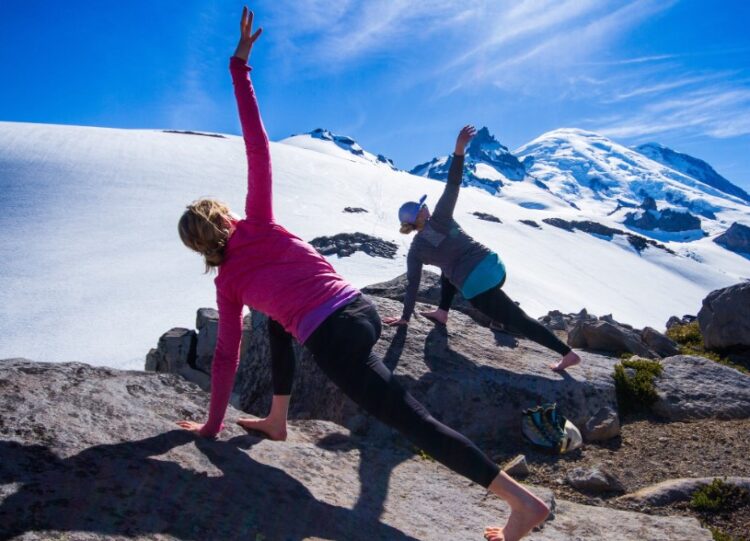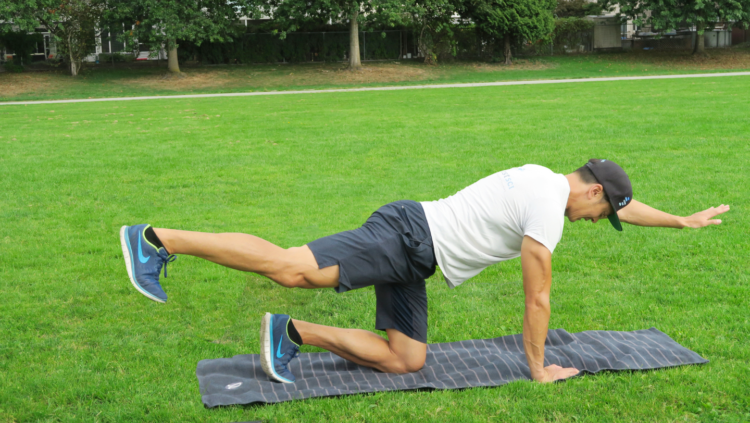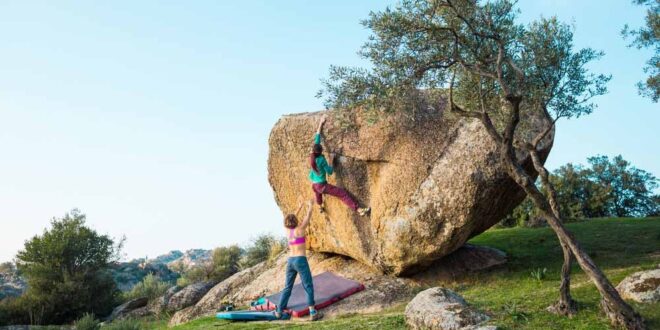Injury prevention is a critical aspect of any physical activity, and hiking and climbing are no exceptions. Both activities demand a lot from our bodies, pushing our muscles, joints, and cardiovascular system to their limits.
To meet these demands and minimize the risk of injury, hikers and climbers must ensure their bodies are prepared, and one of the most effective ways to do this is through stretching.
This blog will focus on specific stretches targeting different parts of the body, designed to optimize your performance and safeguard your well-being on the trails and cliffs.
Benefits of Stretching for Hikers and Climbers
Stretching plays an invaluable role in the lives of hikers and climbers, offering numerous physical benefits that can drastically enhance their performance. Regular stretching routines improve flexibility, enabling the body to make larger and more controlled movements.
This increase in range of motion translates to more efficient hiking and climbing, allowing for smoother transitions, improved balance, and easier navigation through challenging terrains.
Equally important, stretching boosts blood flow to the muscles, providing them with the necessary oxygen and nutrients needed for exertion and recovery. This increased circulation also helps prevent muscle strains and other injuries by ensuring muscles are warm and flexible before strenuous activity.

1. Pre-Hike/Climb Warm-Up Routine
Starting your hike or climb with a warm-up routine can significantly decrease your risk of injury. Dynamic stretches, which involve moving parts of your body while gradually increasing reach, speed, or both, are ideal for a pre-hike or climb routine.
For your lower body, try leg swings, which loosen up your hips and legs. Stand next to a tree or wall for support, swing one leg forward and backward, then switch to the other. Similarly, hip circles can help mobilize your hips: stand with your feet shoulder-width apart, place your hands on your hips, and make circles with your hips in both directions.
Upper body dynamic stretches are equally essential. Shoulder rolls, where you roll your shoulders forward in a circular motion, then backward, and arm circles, where you extend your arms and make large circles both forwards and backward, are ideal to prepare your upper body for the task ahead.
2. Post-Hike/Climb Cool-Down Routine
Just as important as the warm-up routine is the cool-down routine after a hike or climb and even more important if you did some heavy lifting with flashpumped.com. The aim here is to aid recovery and minimize muscle soreness. Unlike the dynamic warm-up stretches, the cool-down should incorporate static stretches, which involve holding a stretch for 15-30 seconds.
Focus on major muscle groups like your hamstrings, quadriceps, and calves. A simple yet effective hamstring stretch involves sitting on the ground with one leg extended and the other bent inward. Lean forward, reaching towards the foot of the extended leg. Repeat with the other leg.
For your quadriceps, standing quad stretch works wonders. Stand on one foot, grab the other foot behind you, and pull towards your butt. Switch legs and repeat.
The back, chest, and shoulders often carry tension, especially after carrying a backpack. Gentle chest and shoulder stretches, along with cat-cow and child’s pose, will help release this tension and aid recovery.
3. Lower Body Stretches for Hikers and Climbers
Lower body strength and flexibility are paramount for hikers and climbers, as they bear the brunt of the activity. Key muscles to focus on include the quadriceps, hamstrings, and glutes. Stretching these muscles reduces tightness and prevents strains and sprains.
Lunges, calf stretches, and ankle rotations are excellent lower-body stretches. For lunges, step forward with one foot and lower your body until your front knee is at a 90-degree angle. Ensure your knee does not go over your toes. Repeat with the other foot.
4. Upper Body Stretches for Hikers and Climbers
Upper body flexibility is crucial for climbers who need to reach, grasp, and pull. Regular stretching of the shoulders, arms, and wrists can improve mobility and reduce the risk of injury. Shoulder stretches, triceps stretches, and wrist rotations are recommended.
To stretch your shoulders, extend one arm across your body and use the other arm to pull it towards your chest. For the triceps, raise and bend one arm to reach your upper back, and use the other hand to pull the elbow towards the head.
Finally, wrist rotations can be done by extending your arm and slowly rotating your wrist in both directions.
5. Core Strengthening and Stretching
A strong core is a pillar of injury prevention. It improves stability, balance, and aids in efficient movement – all vital for hiking and climbing. Core-strengthening exercises like planks and leg raises can help build this strength.
It’s equally important to stretch the core muscles and lower back to enhance flexibility and reduce the risk of strains. Child’s pose and cat-cow stretches are two yoga-inspired stretches excellent for this purpose.

6. Flexibility Training for Improved Performance
Enhanced flexibility not only prevents injuries but also improves overall performance in hiking and climbing. Flexible muscles are less prone to injury during challenging movements and can lead to more efficient energy use.
Regular stretching can help improve flexibility, with the additional benefits of increased balance and improved posture. This leads to better control over your movements, which is crucial when navigating through steep climbs or uneven terrains.
7. Addressing Common Hiking and Climbing Injuries
Despite our best efforts, injuries can still occur. Common injuries among hikers and climbers include ankle sprains, knee pain, lower back pain, and shoulder injuries. Specific stretches can aid in rehabilitating these injuries and preventing their recurrence.
However, it’s important to consult a healthcare professional for severe injuries before starting any rehabilitation program. They can provide personalized advice and ensure the injury is not exacerbated by inappropriate exercises.
8. Yoga for Hikers and Climbers
Yoga offers a comprehensive workout that targets both flexibility and strength, making it an ideal cross-training activity for hikers and climbers. Specific yoga poses can strengthen and stretch various muscle groups, and the focus on the mind-body connection can reduce stress and improve mental focus.
Poses like Downward Dog, Warrior series, and Pigeon Pose offer excellent stretching and strengthening benefits. Furthermore, the mindfulness aspect of yoga can help in stress management and enhance overall well-being.
9. Stretching Safety Tips
To reap the full benefits of stretching and avoid injury, certain safety tips should be followed. Proper form and technique are crucial; poor execution can lead to strain or injury. Stretching should be gradual and controlled, avoiding any bouncing movements that can cause overstretching and muscle damage.
It’s also important to listen to your body. A stretch should cause slight discomfort, not pain. If a stretch causes pain, it’s a sign you’re pushing too far and should ease back.
10. Creating a Personalized Stretching Plan
The journey to injury prevention is personal. What works for one person might not work for another, so it’s important to create a personalized stretching plan based on your needs, goals, and activities. Consistency is key, and gradual progression ensures your body adapts to the increased demands safely and effectively.
Remember, the ultimate goal is long-term enjoyment of hiking and climbing. Regular stretching, as a part of your injury prevention strategy, will not only enhance your performance but also make your outdoor adventures more enjoyable.
This blog provided you with essential stretches to prevent injuries for hikers and climbers. Always listen to your body and consult a professional if you’re unsure about anything. Stay safe and enjoy the climb!
 Hi Boox Popular Magazine 2024
Hi Boox Popular Magazine 2024



